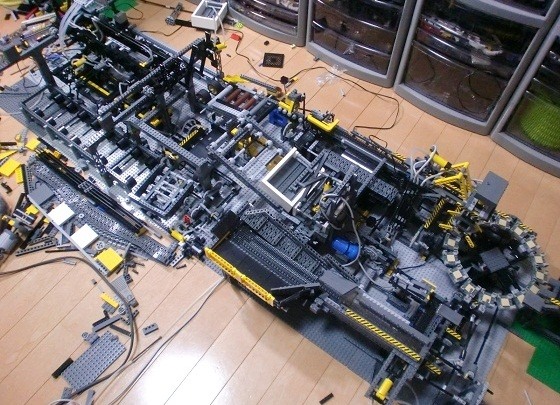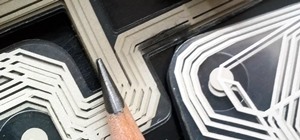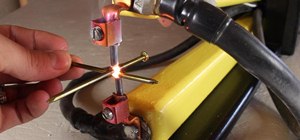Back in the '80s, I was just a kid with a LEGO hobby. I remember building castles and floating boats, spaceships and monster trucks, even a working LEGO train powered by battery, lights and all.
But I wasn't aware of the advancements underway in the educational department—like the Technic Computer Control in '86, which allowed computers to control LEGO robots, trucks and other motorized models. At the time, I thought the new Light and Sound sets were advanced! But now I wonder what I could have accomplished had I had access to those MIT bricks. Maybe I would have become a robotics engineer. Maybe a computer programmer. Maybe someone like Akiyuki.
Akiyuki's marvelous LEGO creations exist today, thanks to Technic, and more importantly, LEGO Mindstorms—the first commercially available robotics product from the collaboration between LEGO and MIT (it was first called Robotics Invention System). One of the most fascinating pieces from Akiyuki remains unfinished—his reproduction of the LEGO production assembly line, which is only 45% complete, though 25% of that is with temporarily assembled parts.

Even more fascinating are his simple motorized designs, built on the foundation of complexity, like his recent LEGO GBC Train Module. GBCs, which stands for Great Ball Contraption, are nothing new. Legomaniacs, or more accurately, AFoLs (Adult Fans of LEGOs), have been building Rube Goldberg-like contraptions for over 5 years now. But Akiyuki's is interesting because of the amount of mechanics in such a small space. It's a very ingenious system, where the two train cars rotate up and down the track, picking up and dumping off tiny plastic balls without collision. Check out the working explanation here (in Japanese).
Another ingenious LEGO contraption is his working LEGO Mindstorms NXT Vision-Guided Brick Sorter, where mixed LEGO bricks of various shapes and sizes are lifted up and tipped onto a conveyor belt by a motorized lift. The bricks than travel down to the weight-sensitive pad, where the weight is measure for each piece in grams and pictures are taken using a Logicool C200 Webcam. The computer then processes the images via OpenCV and pushes the bricks out into plastic cups on a motorize spindle, separated by size and shape. Though the process is slow, it's quite intricate from start to finish, and it's mesmerizing to watch! See the details on this project here and here (again, in Japanese).
Some of his other cool GBC projects include the Archimedes Screw and Spiral Lift, both fun ways to transfer plastic balls from one place to another. And the LEGO Hoopster is quite interesting, as well. Check them all out below.
Just updated your iPhone? You'll find new emoji, enhanced security, podcast transcripts, Apple Cash virtual numbers, and other useful features. There are even new additions hidden within Safari. Find out what's new and changed on your iPhone with the iOS 17.4 update.






















4 Comments
Woah, this kind of blows my LEGO villages with pretty garden flowers out of the water
I know, right? Makes me want to dust off the old LEGOs and (unfortunately) buy some more.
that is legoliciously constructed!
oooo aaaaa ooooo aaaaaaaaa!
Share Your Thoughts